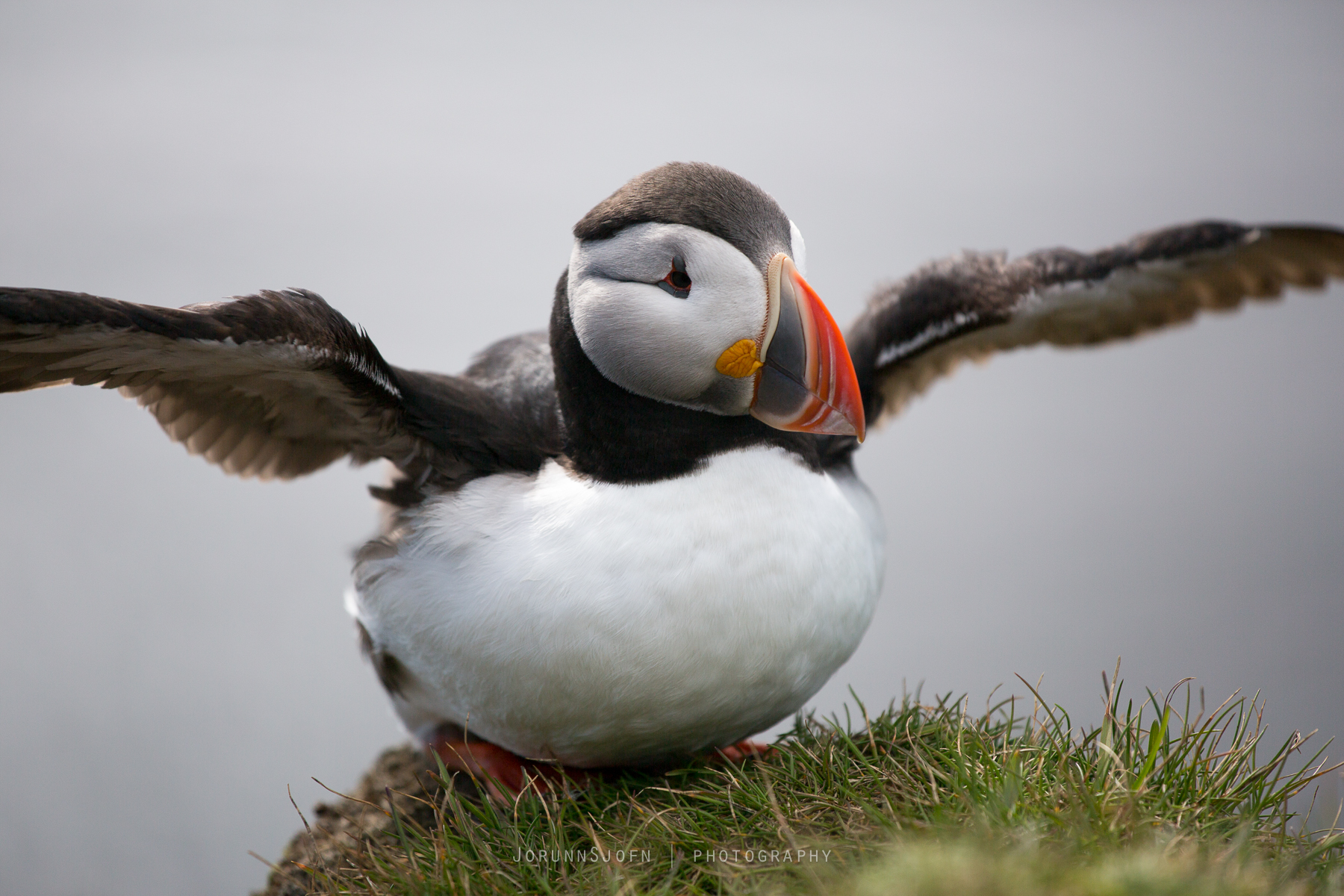

Like many auks, puffins eat both fish and zooplankton, but feed their chicks primarily with small marine fish several times a day. Puffins in captivity have been known to breed as early as three years of age.Īfter breeding, all three puffin species winter at sea, usually far from coasts and often extending south of the breeding range. After fledging, the chicks spend the first few years of their lives at sea, returning to breed about five years later.
#PUFFIN BIRD PATCH#
The incubating parent holds the egg against its brood patch with its wings. The female lays a single egg, and both parents incubate the egg and feed the chick. Puffins form long-term pair bonds or relationships. The eggs of the Atlantic Puffin are creamy white but can be occasionally tinged lilac. The Atlantic Puffin burrow is usually lined with material such as grass, leaves and feathers but is occasionally unlined. The nesting substrate of the Tufted and Atlantic Puffins is soft soil, into which tunnels are dug in contrast the nesting sites of Horned Puffins are rock crevices on cliffs. Horned Puffin burrows are usually about 1 meter (3 feet) deep, ending in a chamber, while the tunnel leading to a Tufted Puffin burrow may be up to 2.75 meters (9 feet) in length. Both sexes of the Horned Puffin help to construct their nest. The male Atlantic Puffin builds the nest and exhibits strong nest-site fidelity. Puffins breed in colonies on coasts and islands several current or former island breeding sites are named as Puffin Island. North Pacific: British Columbia, throughout southeastern Alaska and the Aleutian Islands, Kamchatka, the Kuril Islands and throughout the Sea of Okhotsk.

North Pacific: coasts of Siberia, Alaska and British Columbia, wintering south to California and Baja Californiaģ8 cm (15 in) in length, with a 63.5 cm (25 in) wingspan, weight 780 g (1.7 lb). Winters south to Morocco and New Yorkģ8 cm (15 in) in length, with a 58 cm (23 in) wingspan, weight 620 g (1.4 lb). North Atlantic: coasts of northern Europe south to northern France, Ireland, the Faroe Islands, Iceland, Greenland and Atlantic Canada then south to Maine. Species details Species in taxonomic sequenceģ2 cm (12.5 in) in length, with a 53 cm (21 in) wingspan, weight 380 g (13 oz). They fly relatively high above the water, typically 10 m (30 ft) as compared with the 1.6 m (5 ft) of other auks. The colourful outer part of the bill is shed after the breeding season, revealing a smaller and duller true bill beneath.Īlthough the puffins are vocal at their breeding colonies, they are silent at sea. The bill appears large and colourful during the breeding season. The head has a black cap, the face is mainly white, and the feet are orange-red. The puffins are stocky, short-winged and short-tailed birds, with black upperparts and white or brownish-grey underparts. Similarities in body shape and colour between puffins and penguins are due to convergent evolution. In the air, they beat their wings rapidly (up to 400 times per minute in swift flight, often flying low over the ocean’s surface. Their short wings are adapted for swimming with a flying technique under water. They will shed the colourful outer parts of their bills after the breeding season, leaving a smaller and duller beak. The Tufted Puffin was formerly placed in the genus Lunda.Īll puffin species have large beaks. They breed in large colonies on coastal cliffs or offshore islands, nesting in crevices among rocks or in burrows in the soil. These are pelagic (open sea) seabirds that feed primarily by diving in the water. Puffins are any of three auk species (or alcids) in the bird genus Fratercula with a brightly colored beak in the breeding season.


 0 kommentar(er)
0 kommentar(er)
